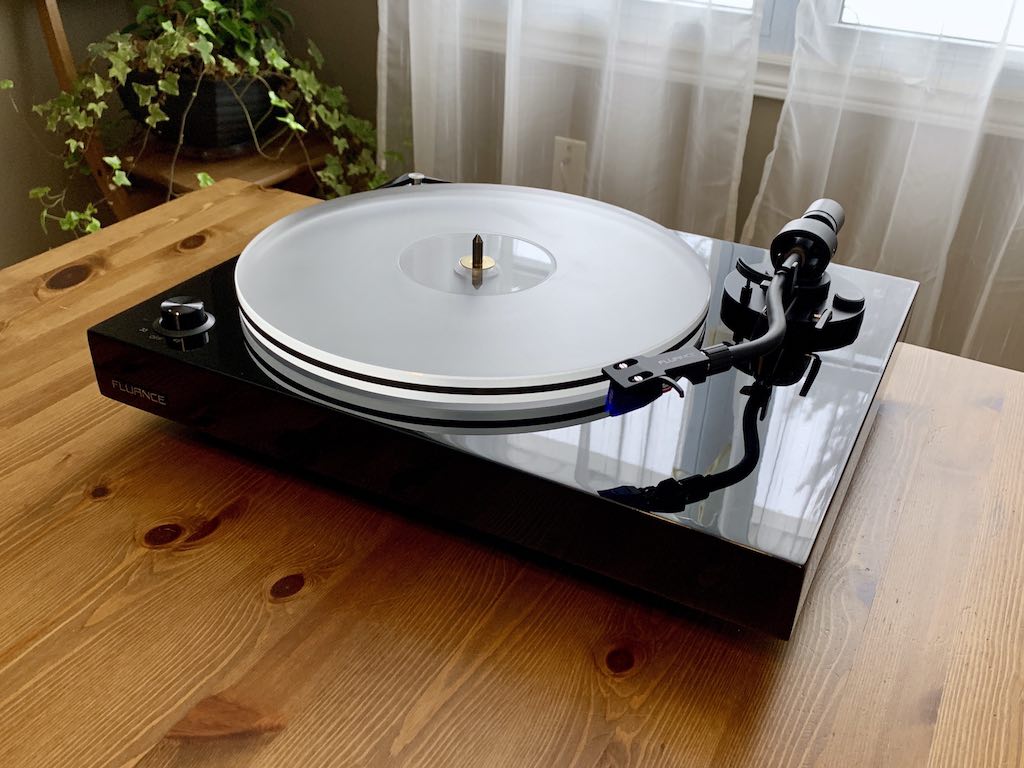
Vinyl is hot and if you’re a big fan of music you’ve probably heard the siren song of the record player. However, turntables can vary wildly in price, depending on the brand, components used, and features. That makes picking one a potentially confusing exercise. This article should help make sure that you pick the right turntable so you get the most out of your record collection.
Table of contents:
- What to look for in a turntable
- Learn about the stylus
- Special features to consider
- How to set up a turntable
- Do I need a receiver
Vinyl records, which were given up for dead when the digitally perfect CD arrived, have been on fire for the past decade. In 2018, physical music sales once again declined overall with the popularity of music streaming services, but vinyl record sales were up nearly 12%. Compared to digital music—CD, MP3 or a streaming service—records often sound imperfect, but that analogue sound is a big part of the appeal. Fans of vinyl feel it produces music that is warmer than digital audio, and with the right turntable it can also be more detailed.
So let’s go through some basics that will help you find the right record player for your home.
What to look for in a new turntable
There are two primary types of turntable: direct drive and belt drive. Direct drive is favoured by deejays for its immediate spin up to speed. However, most consumer turntables are belt drive. As the name suggests, a rubber belt is used to turn the platter. This approach has the advantage of being able to isolate the motor and reduce vibration for better audio. You may need to replace the belt eventually (it’s easy to do), but the sound quality makes belt drive the preferred choice for most music listeners.
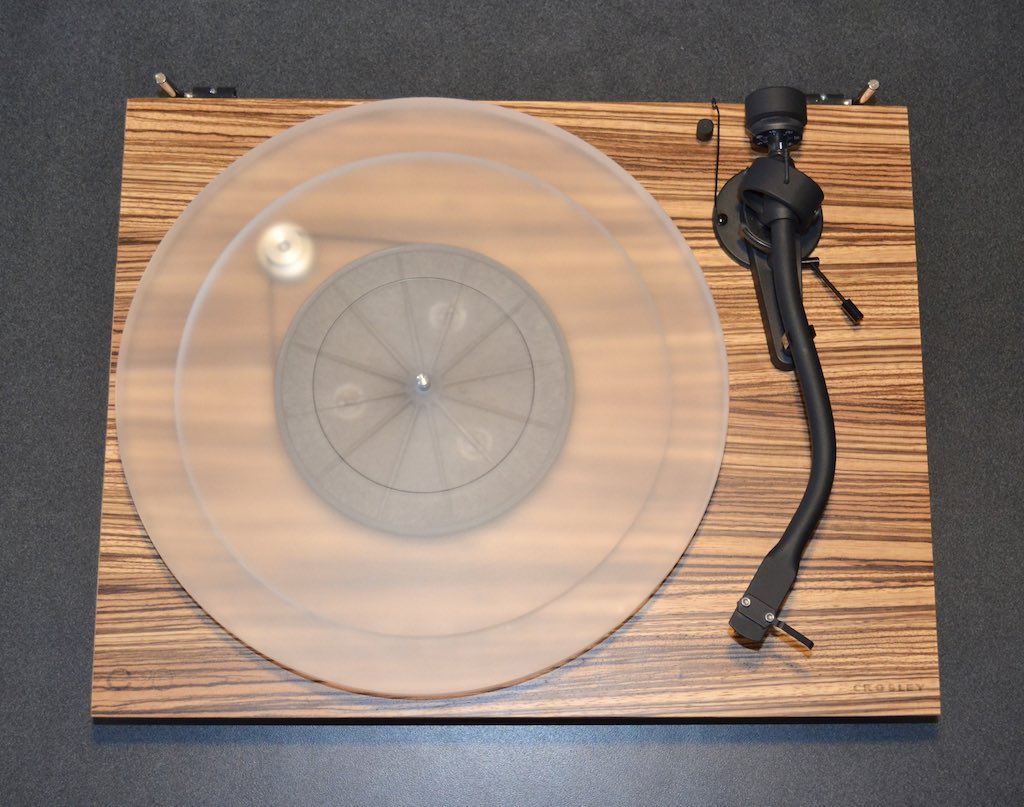
Vibration is the enemy of vinyl, as any vibration can make its way into the stylus (the needle that rides in the grooves of a record) and result in distortion. So when picking a turntable, look for one with features that minimize vibration. Heavy is much better than light in this respect, so higher quality turntables tend to use wooden decks rather than hollow plastic. Look for a platter that is heavy as well—cast aluminum or solid acrylic are superior to plastic or thin metal. Also look for feet that reduce vibration.
There are two speeds that most records are played at: 45 rpm (singles) and 33-1/3 rpm (albums). Some very old records play at 78 rpm. These were popular in the 1920s through the 1940s, but were discontinued by the mid-1950s. Most people will be happy with a two-speed turntable that plays 45 and 33-1/3 records.
Many modern turntables include a built-in preamplifier. This is a great option that lets you play your records through a connected speaker or mini stereo system using its AUX input. If you are connecting to a traditional stereo amplifier or receiver with a PHONO input, you won’t need that feature, but with most of these turntables it can be switched off when not required.
Finally, the potential for upgrading is a key consideration and a big part of your choice. If you are buying a turntable for casual listening you probably won’t care about upgrades. But if there’s a possibility that you might want to improve the sound of your audio system in the future, consider spending a little more upfront on a model that can be upgraded with components like a new cartridge instead of having to buy a new turntable altogether.
Will the turntable work with any vinyl record?
If you’ve been in a record shop, you know that records come in different sizes, thicknesses and even colours. If you buy a two-speed turntable, it should be able to play just about anything (except 78 rpm records), including 180g pressings. You may need an adapter for 45rpm singles, but most turntable makers include one of these in the box.
What do I need to know about the cartridge and stylus?
Two of the most important components on any turntable are the cartridge and stylus. These have a huge impact on how a record will sound, and they also happen to be two components you may end up replacing. The tone arm swings over the record, then lowers so the cartridge is positioned over the beginning of the first song; it settles gently so the stylus (you might have heard it called the needle) rests in a groove on the surface of the record.

The stylus is the diamond that rides in the groove of a record. More expensive versions will have a “nude” stylus (pure diamond), while more basic versions are diamond-tipped metal. There are four shapes the diamond can take; the most popular is elliptical, but entry level record players often have a conical stylus that is wider, makes less contact, and is therefore less accurate. The stylus wears with time, but it can be easily replaced on any turntable or record player.
The cartridge is the housing for the stylus. Its primary job is to convert the vibrations from the stylus into an electrical signal that becomes music. Most cartridges are moving magnet (or MM) type, while high-end options may be moving coil (MC). There are two primary standards used for mounting a cartridge to the tone arm, Standard Mount and P-Mount. Many entry level turntables have the cartridge integrated with the tone arm, so they can’t be replaced (although the stylus can always be swapped out when worn).
Upgrading to a new cartridge is one of the key ways to improve the overall sound of a turntable—just make sure to pick a replacement that uses the same mount.

A quick word on tone arms. Turntables will have either a straight tone arm or an S-shaped one. Which is best is a matter of debate, but S-shaped is generally considered to be more gentle on the records, causing less wear. Entry level record players tend to have straight tone arms, while S-shaped tone arms become more common with higher end turntables.
What about the platter and mat?
The platter is the “turn” part of a turntable, the round, album-sized disc that rotates. There are two things to keep in mind with the platter that will impact the overall audio performance.
The first is that weight and density protect the stylus from vibration. The second is that weight helps to keep rotation speed more consistent, reducing the “wow and flutter” that can sometimes be heard in music playback. In both cases, a heavy and dense platter means better sound than a lightweight version made of stamped metal or thin plastic. The platter is an upgrade option for many turntables. For example, moving to an acrylic platter reduces distortion, reduces static and no mat is required.

Most platters require a mat, a thin disc of material that sits on the platter. It protects the record, helps to hold it in place on the platter, and provides another layer to protect against vibration. Most record mats are made of materials like felt, rubber, or cork. They are easily replaceable, and record companies sometimes issue collectible platter mats printed with band logos or album covers.
What special features should I consider?
On the surface, turntables look a lot like the versions that were sold decades ago. Many still offer features that were common then, including auto-stop and auto-return (either automatically stopping the turntable at the end of the side of a record, or stopping play and automatically returning the tone-arm to its starting position).
But today’s turntables offer many more special features that are worth considering.
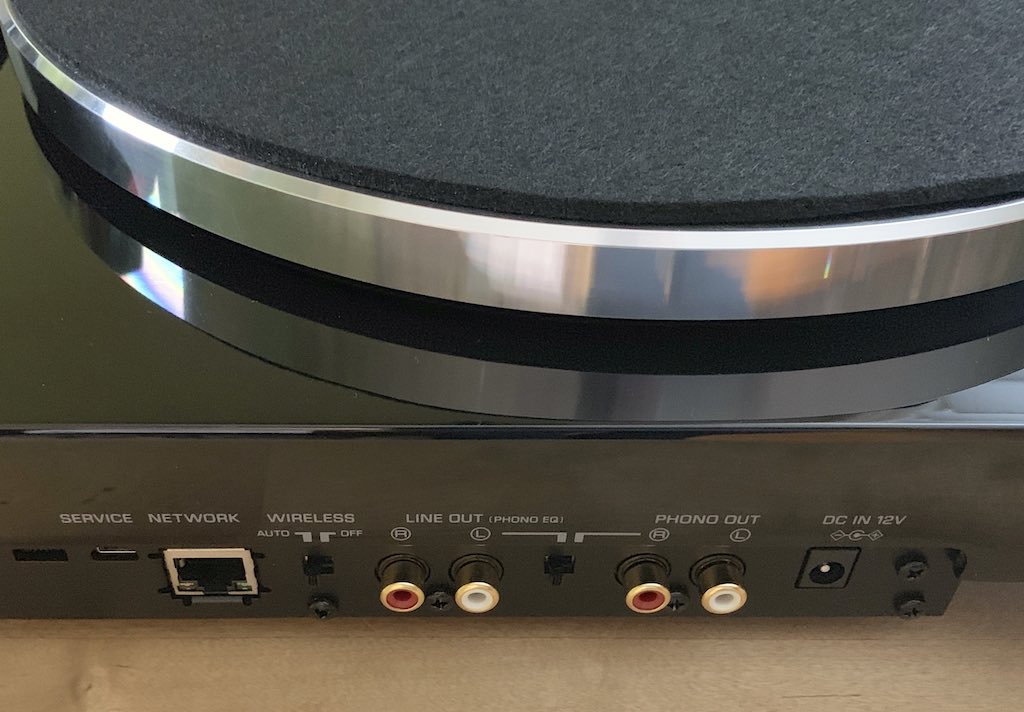
A built-in preamplifier is a popular option that allows a turntable to output audio directly to an audio system’s AUX input. USB output lets you connect a turntable to a PC, play a record and record the tracks as digital files. And in a nod to the popularity of wireless speakers, some turntables now support streaming playback via Bluetooth or Wi-Fi.
There are also options for portable record players and all-in-one stereo systems that include a record player.
How to set up a turntable
The amount of effort and technical skill needed to set up a turntable varies, but most are designed to be assembled and set up by a beginner with no tools and no experience.
Entry level turntables are the easiest. Most of these have a built-in cartridge and assembly is usually limited to putting the belt around a motor pulley and the platter.
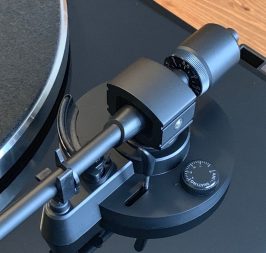
With more capable turntables, there is a little more involved, but it still shouldn’t take more than 15 or 20 minutes. The first step is to install the belt and platter (this is usually quite simple; just follow the instructions provided by the manufacturer). After the platter and belt are installed, the cartridge will need to be mounted, but most companies make this easy by providing a slotted mount on the end of the tone arm with a finger-tightened sleeve. At this point, the tone arm needs to be balanced and the tracking force set. This involves adjusting a counterweight located at the opposite end of the tone arm from the cartridge. Finally, the anti-skate force is set. It’s more complicated than it sounds, and manufacturers’ include step-by-step instructions for each model.
The final step is to make sure the turntable is level. If it’s not, audio is going to be distorted, and the motor will be working harder.
Do I need speakers and a receiver to be able to listen to music?
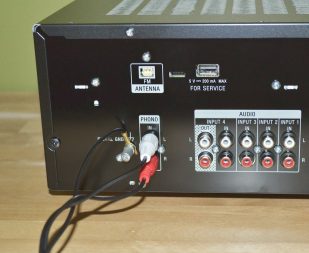
When the turntable is set up, you are all set to play records. However, unless you chose a portable record player with built-in speakers or an all-in-one stereo system with a record player, you need a little more to actually listen to music. If you put your head near the turntable as its playing a record, you’ll hear some high pitched sound—that’s the audio being picked up from the vinyl grooves by the stylus and cartridge, but it still needs to be amplified to actually hear it as music.
If your turntable has a headphone input, plug in and you are ready to listen. If it has wireless streaming capability, you can connect to a wireless speaker or wireless headphones. If the turntable has a built-in preamplifier, you can use an audio cable to connect to the 3.5mm AUX input on most music systems and many portable speakers.
If the turntable has no built-in preamplifier, you have two options.

The turntable will have two RCA audio connectors. Using RCA cables, you connect the turntable to a stereo receiver or amplifier (learn all abouthow to choose a receiver in this receiver buying guide) that has a PHONO input. PHONO was a standard input for years, but receivers and amps released over the past few decades may lack it. You can’t simply connect the turntable to another input or AUX, because the signal lacks sufficient amplification.
That’s where a preamplifier comes in. This is a small stereo component that boosts the audio signal coming from the turntable. You connect the turntable to the preamplifier’s PHONO input using RCA cables, then connect the preamplifier to any receiver, amplifier or stereo system that has an AUX input.
Turntables in this class may also have a ground wire that reduces background hum the cartridge could pick up from connected electrical equipment.
Turntable care + record care and storage
Most turntables come with a dust cover. This keeps delicate components from getting dusty when not in use. The primary maintenance to be aware of for a turntable itself is keeping the stylus clean (a stylus brush and cleaning fluid can help to remove any debris).
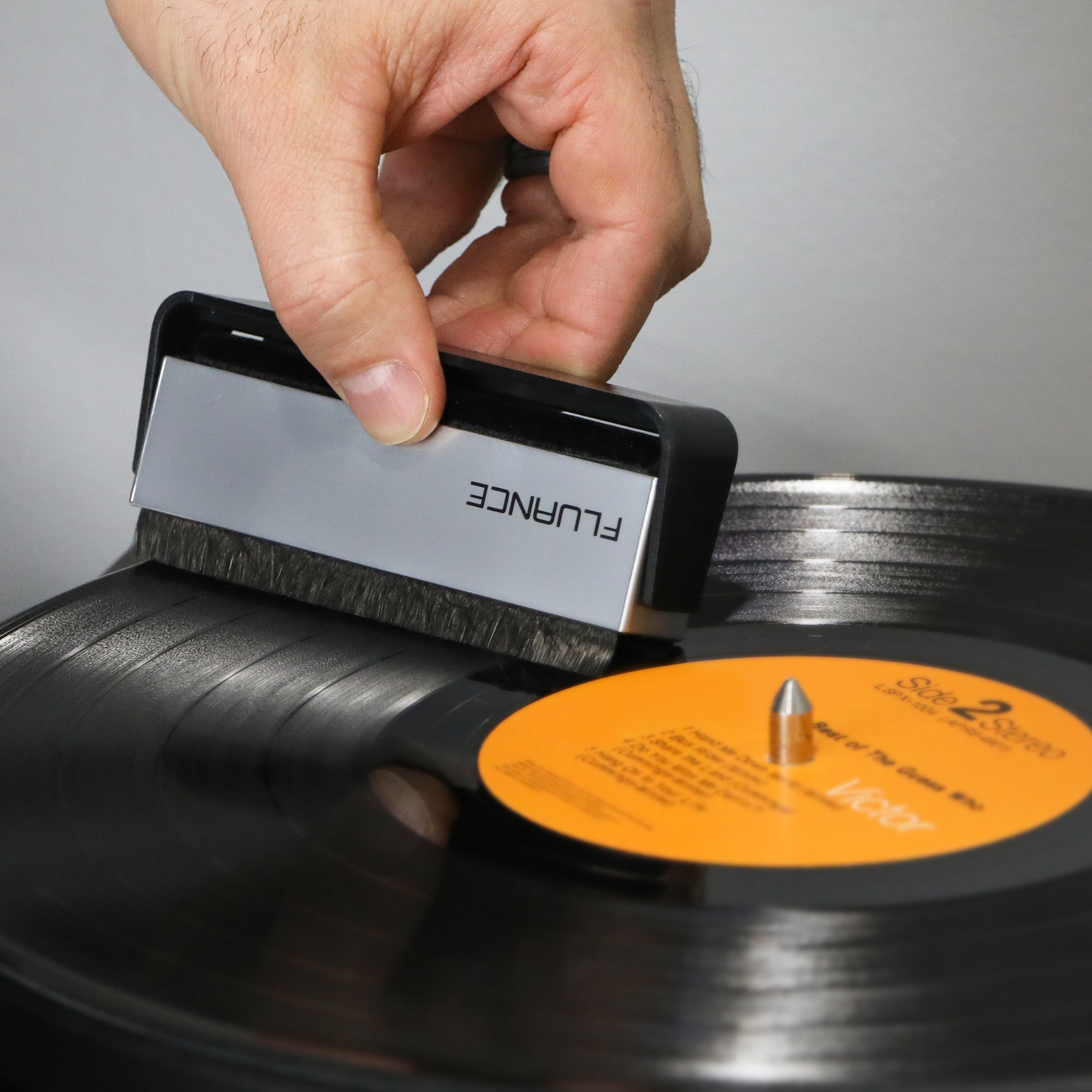
The stylus will wear out with use and require replacing. Most manufacturers suggest replacing the stylus after every 1,000 hours or so of play time. If you leave a worn stylus on a turntable, the music quality will take a hit, it may skip more frequently, and there is a risk that the stylus could physically damage records. The belt will also eventually require replacing.
The most important part of ensuring sound from your records—while also protecting your stylus—is to make certain records are clean. Make sure to use a record brush prior to playing any record, to remove dust and surface debris and reduce static.
Records should be stored upright to reduce the risk of warping, with crates being a popular method of organizing and safely storing a collection.
Popular turntable brands carried by Best Buy
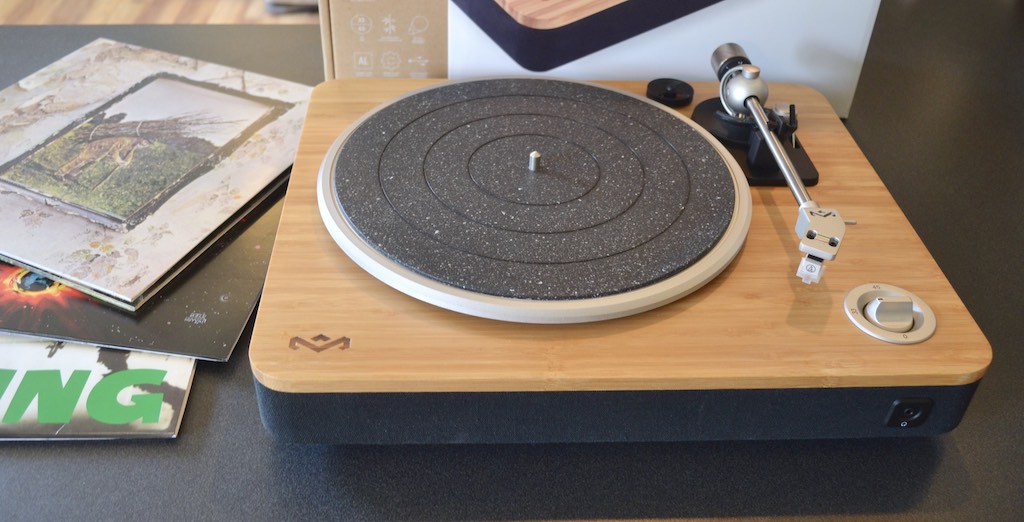
Whether you’re looking for a basic record player for casual listening, a direct drive deck for deejaying or a great turntable for sitting back and enjoying your vinyl collection, Best Buy has you covered.

Look for all the tops brands in turntables—from classic manufacturers to the latest companies to join the vinyl resurgence, including SONY, TEAC, Audio Technica, Denon, Marantz, Toshiba, Victrola, Innovative Technology, Pioneer, Crosley, Ion, Pro-ject, Klipsch and Marley.
Getting into vinyl is a great way to rediscover great music from your past. It is also a great way to listen to new music in the classic way: from first song to last on an album, rather than as a single “hit” streamed to your phone. Old becomes new, and new becomes, for many of us, better! If that sounds like a great plan, you will find many turntable options at Best Buy!




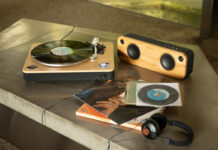

Elliott, thanks for the detail, that is great info to know! I haven’t been in the habit of cleaning my stylus after each record, let alone every side — it’s been more of a monthly thing — but sounds like I should step up the frequency… Cheers, Brad.
This is great information about Turntables!
I’d like to elaborate a bit. Direct drive turntables are indeed favoured by Disc jockeys, partly due to the immediate start-up speed, but primarily because you can “back-cue” ( go backwards in the groove to the start of the song )on a direct drive turntable, which is significantly more difficult on a belt drive. Back cuing is always done using Conical (spherical) styluses, as they glide better in the groove for this purpose, as opposed to elliptical cartridges which can get deep in the record groove to get more detail, for the audiophile.
As mentioned, vibration or resonance is the enemy of a turntable, and choosing a heavy turntable will help in reducing the affect of external vibrations affecting the overall sound, because the weight of the turntable will prevent light vibrations from reaching the cartridge and stylus. This is why some manufacturers opt for spring loaded suspension, to eliminate these vibrations and resonances.
Looking for a unit that features a heavy platter will help to reduce speed fluctuations, because the platter will act as a flywheel, enabling the motor to maintain constant speed.
There are 3 basic types of tone arms, Straight, “J” shaped and “S” shaped, each with it’s own attributes. what to look for here may be important based on application. Some tonearms will not have detachable headshells, which will allow for easily interchanging the cartridge. By changing the cartridge, you will be changing to tonal quality of your music system, along with other nuances such as detail, imaging, separation and sound-stage. keeping in mind that the cartridge is “the system’s source of information”, and next to the speakers it is the most important part of a stereo system. Some audiophiles, such as myself, have numerous cartridges that we interchange, and use different cartridges for different types of music, or application.
Phono Pre-amps are also an important part, and there are varying qualities of these units ranging from $35 to $3500 and these can also affect overall sound quality.
Record mats and accessories are also important, with a record mat, ideally it should be completely flat, so as not to allow the record to resonate. This is also partly the reason for new records that tout heavy weight such as 180-220 grams, to prevent these vibrations from reaching the stylus. There are all sorts of accessories including record clamps to help achieve this goal.
Cleaning the record properly is important, and it’s worthy to note that the stylus should also be cleaned using appropriate stylus cleaner, after each side of play.
I found that, if you never clean your stylus it can last between 500-700 hours of play, whereas a clean stylus can last up to 1400 hours of play, depending on the tracking weight.
Carbon fiber record brushes are great for cleaning records, some are better than others due to shedding of the carbon fibre bristles. there are rolling cleaners as well and I’ve even seen people using the “Schticky” to clean vinyl LP’s and it worked really well.